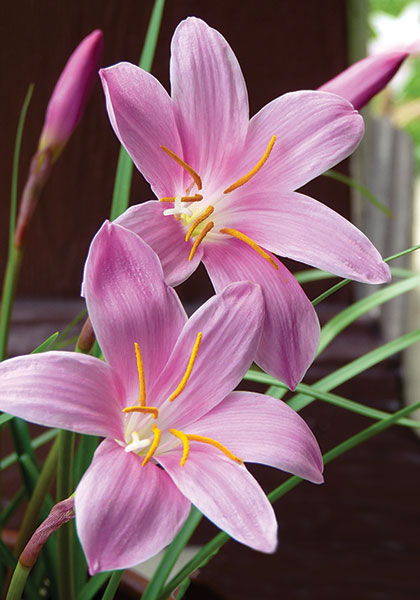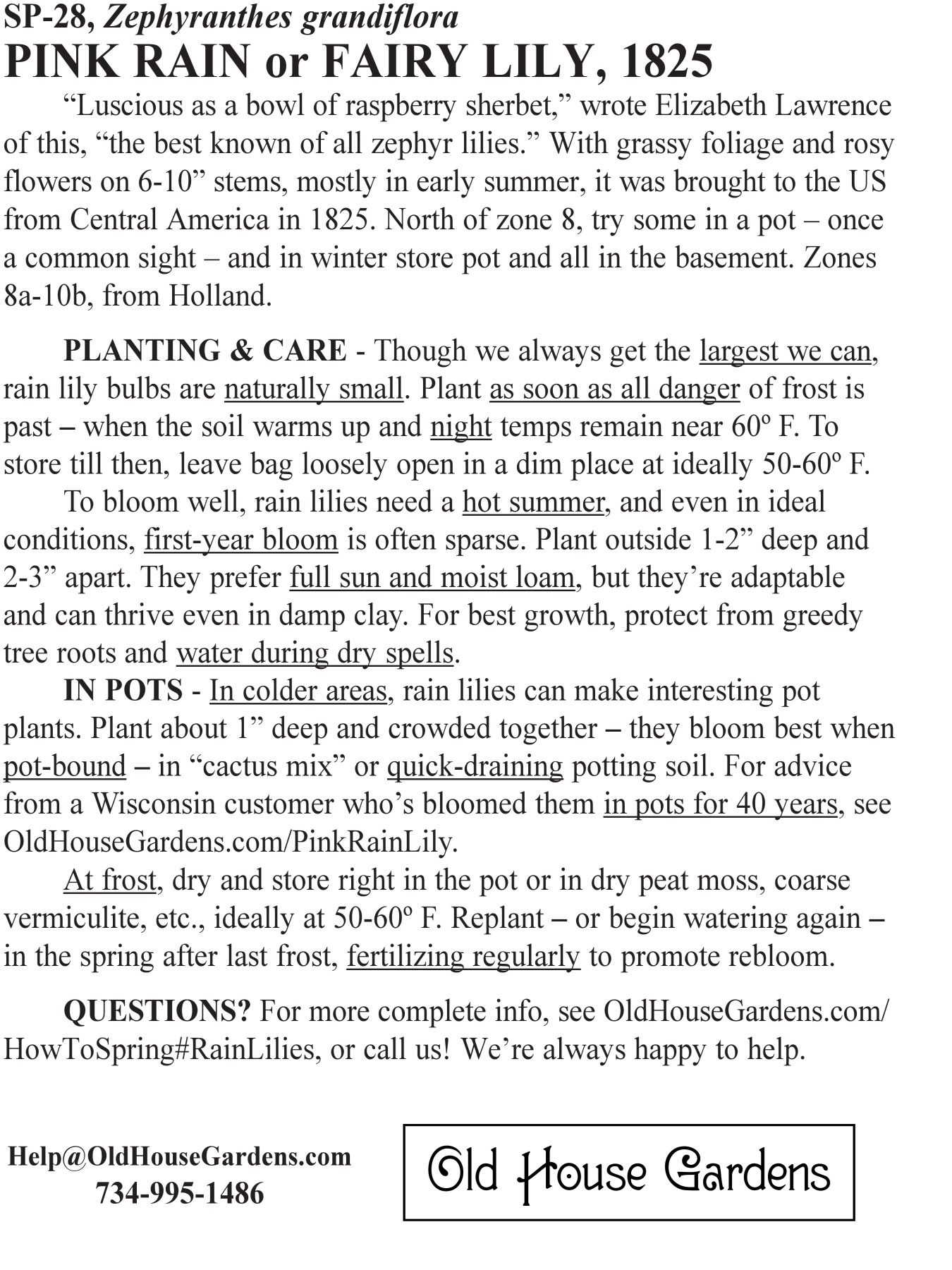|
|

 
|
|
On sale now! “Luscious as a bowl of raspberry sherbet” wrote Elizabeth Lawrence of this, “the best known of all zephyr lilies.” With grass-like foliage and rosy pink flowers on 6-10 inch stems, mostly in early summer, it was brought to the US from Central America in 1825. If you’re north of zone 8, try some in a pot, once a common sight on porches. In winter, simply set the pot dry in the basement. For inspiration, read one Wisconsin family’s story of their 100-year love affair with pink fairy lilies in zone-4! Zones 8a-10b, from Holland.
You save 20%!
|
|
SUB TYPE wildflower ZONES 8a-10b or in pots HEIGHT 6-10” SOURCE Holland, Dutch LIGHT full sun |
PLANTING & CARERain lily bulbs are so small, it’s best to plant them as soon as possible. But you have to wait till all danger of frost is past — when the soil warms up and night temperatures remain near 60° F. You can check the average low for any zip code and any day of the year at weather.com and similar sites. If that means you have to store them, leave the plastic bags loosely open at the top so air can circulate a bit and set in a cool, dim place. 50-60° F is ideal, but close will do. Keep an eye on them to make sure they don’t dry out completely. White rain lilies are hardy in zones 7 and warmer (lows to 0°F), pink in zones 8 and warmer (to 10°). To bloom well, both need hot summers. Plant outside 1-2 inches deep and 2-3 inches apart. Though they prefer full sun and moist loam, they are very easy to grow (“absurdly easy and prolific,” Scott Ogden writes in Garden Bulbs for the South) in a wide range of conditions, even damp clay. In their native Argentina the white ones actually grow in marshland! Protect them from greedy tree roots and keep them watered in dry spells and they will reward you with even better growth. In colder areas, they make interesting plants for pots (especially the pink ones). Plant about 1 inch deep and crowded close together — they reputedly bloom best when pot-bound — in "cactus mix" or another quick-draining potting soil. Water well. To stimulate bloom, many authorities recommend setting them in a saucer of water once well established. Heat is important, too! WINTER CARE — In areas where they’re not winter-hardy, bring inside at frost. Dry and store right in the pot or in dry peat moss, coarse vermiculite, etc., ideally at 50-60° F. Replant — or begin to water again — in the spring after last frost, fertilizing regularly to promote rebloom. Learn more about growing and enjoying rain lilies at our Spring Diverse Newsletter Archives. |

|
SPRING
|
· |
SUMMER
|
· |
FALL
|
· |
LEARN MORE
|
· |
ORDERING
|

|










